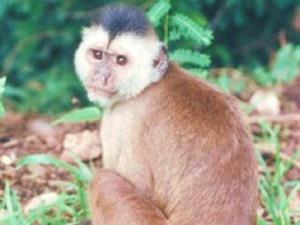Liza Maria Veiga
Other projects
3 Mar 2010
Ecology and Conservation of the Critically Endangered Ka'apor Capuchin Monkey (Cebus kaapori) in the Brazilian Amazon
This project aims to identify remnant populations of the Critically Endangered Ka’apor capuchin monkey (Cebus kaapori), implement an environmental education program and contribute to “Conservation Action Plans” for this primate species.

Cebus kaapori. © Liza Veiga.
The Ka’apor capuchin monkey is endemic to a region in Brazil where the intensification of habitat-degrading activities over recent decades has left remnant populations in a completely fragmented landscape. Recent surveys and a study of its behaviour and ecology have demonstrated just how rare and susceptible to hunting the species is. The species is one of, if not the most threatened primate species in the Brazilian Amazon. More studies are urgently needed to locate and determine the size and location of remnant populations and inform the public of the plight of this species through environmental education programs.
The objectives of this project are to:
- Produce maps - using the modelling software - of the potential areas of occupation of remaining populations within the states of Maranhão and Pará;
- Visit the locations identified during the modelling process and confirm that the species is indeed present;
- Produce pamphlets and undertake workshops at local schools and communities to stimulate the interest of children and their parents in the plight of this species;
- Train young biologists to undertake research in Brazil;
- Develop links with private landowners and Amerindians at locations where populations of monkeys are found and explore opportunities to protect these animals;
- Support the development of effective conservation strategies for the species and its habitat, with agencies responsible for monitoring the forests within the species range, at state and national levels;
- Contribute to the development of a Conservation Action Plan for the species together with the Brazilian Ministry for the Environment.